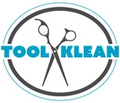UV vs. UVC: Which Ultraviolet Light Is Better for Sanitizing?
When it comes to keeping our surroundings germ-free, understanding the power of ultraviolet light is key. But with terms like UV, UVC, and UV-A floating around, it can get a bit confusing. Let's break down what these terms mean and which type of UV light is your best bet for sanitizing.
Understanding the UV Spectrum
The sun emits ultraviolet (UV) energy, a form of electromagnetic radiation that's invisible to the human eyes. The UV spectrum is divided into three main types: UV-A, UV-B, and UV-C. Each type has different wavelengths and, thus, different effects on our world.
- UV-A Light: With the longest wavelength, UV-A light makes up the majority of the UV radiation reaching Earth. It's associated with tanning beds but can also contribute to skin aging.
- UV-B Rays: These have shorter wavelengths and can cause sunburn. While less of it reaches the Earth's surface, it's still harmful to skin and eye health.
- UV-C Light (Ultraviolet C Light): UV-C light has the shortest wavelength and is known for its germicidal properties. It's this short wavelength that makes UV-C so effective at destroying the genetic material in viruses and bacteria, including SARS-CoV-2, the virus responsible for COVID-19.
What Is UV-C and How Does It Work?
UV-C light operates at a wavelength of approximately 200 to 280 nanometers. This short wavelength allows UV-C radiation to penetrate the outer cell membranes of microorganisms, damaging their DNA or RNA, which prevents them from reproducing and causing infections. Because of this, UV-C lamps are widely used in air purification, water disinfection, and surface sterilization processes.
The Battle Against Germs: UV vs. UVC
While all UV light can affect viruses and bacteria, UV-C is the most efficient type for sanitization purposes. Here's why:
- Effectiveness: UV-C light's germicidal abilities are unmatched by UV-A or UV-B rays. Its shorter wavelengths are specifically adept at inactivating microorganisms, making it a powerful tool against a wide range of pathogens.
- Safety: Although UV-C is powerful, direct exposure to UV-C radiation can be harmful to skin and eyes. This is why UV-C sanitizing devices are designed to be used safely, with proper shielding or in settings where human exposure is controlled.
- Technology: UV lamps, especially mercury lamps and more recently developed LED technologies, are capable of emitting the specific UVC wavelength needed for effective sanitization. These UVC lamps are integral to creating environments that are inhospitable to bacteria and viruses.
Applications and Safety
The use of UV-C light extends beyond just cleaning surfaces. It's also used in air purification systems to reduce airborne pathogens and in water treatment facilities to ensure safe drinking water. However, safety precautions are necessary to avoid UVC exposure, as it can be harmful to both the skin and eyes due to its powerful electromagnetic radiation.
Conclusion
When it comes down to UV vs. UVC for sanitizing, UVC clearly stands out. Its ability to disrupt the DNA and RNA of pathogens makes it a superior choice for sterilization and disinfection. While it's essential to use UVC light safely and responsibly, its benefits in fighting against bacteria and viruses are invaluable, especially in our ongoing battle against pathogens like SARS-CoV-2. By harnessing the power of UVC wavelength technology, we can maintain cleaner, healthier environments for everyone.




Leave a comment